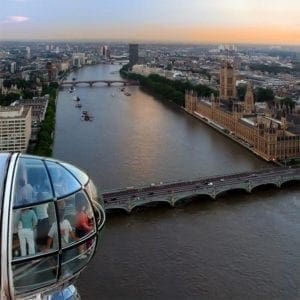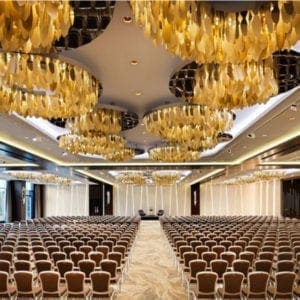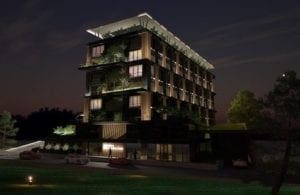European economies have been slow to recover from the Great Recession but began to gain momentum in early 2014. Today, optimism about the economy is more tempered as the economic shockwaves from China’s downturn and those of its major trade partners may threaten Europe’s fledgling recovery. Overall, the investment climate has changed markedly as much of Europe is now in a reactionary mode, on the watch for further economic and political headwinds.
Since early 2014 the hotel construction pipeline has experienced five consecutive quarters of modest YOY improvements and has grown to 890 Projects/143,744 Rooms (Chart 1 below), the highest level since 2008. Projects Under Construction were essentially flat, causing new hotel supply to show little growth as it fluctuated in a comparatively low range, between 220-285 new hotel openings per year over the period. Forecasts for 2015-2017 call for continued low supply growth, averaging 215-230 hotel openings a year. This lack of new supply has helped hotel operations recover, particularly hotel occupancy, and will likely give lodging operations further time to stabilize.
 London’s pipeline is growing, albeit slowly, and has 60 Projects/11,186 Rooms (Chart 2). Istanbul’s growth is meager as well, rising to 35 Projects/5,930 Rooms, while Moscow has actually declined YOY to 34 Projects/8,617 Rooms. The Moscow pipeline is plagued by project cancellations, construction delays, and a scarcity of new project announcements as the Russian economy reels.
London’s pipeline is growing, albeit slowly, and has 60 Projects/11,186 Rooms (Chart 2). Istanbul’s growth is meager as well, rising to 35 Projects/5,930 Rooms, while Moscow has actually declined YOY to 34 Projects/8,617 Rooms. The Moscow pipeline is plagued by project cancellations, construction delays, and a scarcity of new project announcements as the Russian economy reels.
Robust pipeline in Middle East
The Middle East Construction Pipeline is robust and concentrated in Saudi Arabia, Dubai, Abu Dhabi, and Qatar. These countries account for 75% of the rooms in the region’s Pipeline, which stands at 426 Projects/128,386 Rooms, just 15% off of the peak established in 2007. Projects Under Construction rose quickly in the last two quarters to 224 Projects/74,273 Rooms, a level not seen since 2008. Many of these projects started construction years ago but were halted during the financial crisis. When these projects became inactive they were removed from the Pipeline, but have recently reentered as financial availability rebounded. They are now on a fast track toward opening in 2016 and 2017. Other projects that were only on the drawing board during the 2008 financial crisis have resurfaced, growing the Early Planning stage to 107 Projects/31,540 Rooms, the highest level reached in more than seven years. These projects will likely leave the Pipeline as new hotel openings in 2017 and beyond, providing a steady flow through decade end.
In Saudi Arabia, hotel development is propelled forward by the country’s focus on encouraging greater religious and leisure travel. It has 160 Projects/56,529 Rooms in the Pipeline, accounting for 44% of all Pipeline rooms in the Middle East.
Makkah, home to the Muslim holy site of Mecca, has 23 Projects/28,436 Rooms in the pipeline, including a colossal 10-tower, 10,000-room hotel, estimated to cost $3.6 billion. Next follows the capital city Riyadh, with 53 Projects/11,018 Rooms. Jeddah, a thriving seaport and resort destination on the Red Sea has more than doubled its Pipeline in the last year to 39 Projects/8,671 Rooms.
Dubai, a major financial center and European tourist destination, has recovered from its financial calamity earlier and now has a booming Pipeline at 89 Projects/25,727 Rooms. Dubai accounts for two-thirds of all hotel development activity in the United Arab Emirates.
In summary, as financial markets in the Middle East strengthened a significant number of new projects were announced into the pipeline. As a result, new hotel openings are scheduled to increase in 2016 and then accelerate in 2017 and beyond. If there is a significant economic decline or falloff in tourism in the region the timing of these new openings may prove problematic for future hotel profitability.
Source: Lodging Econometrics















